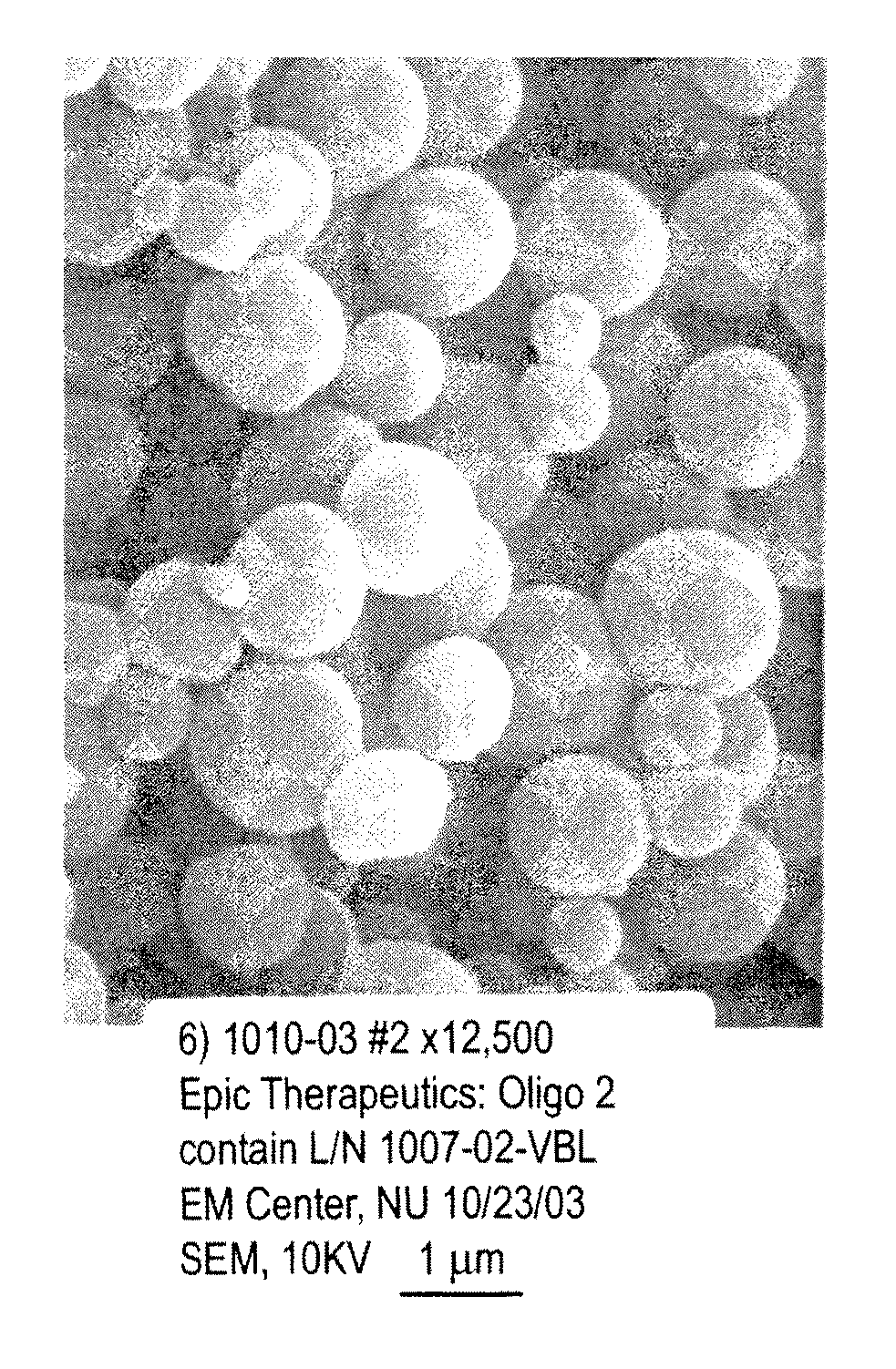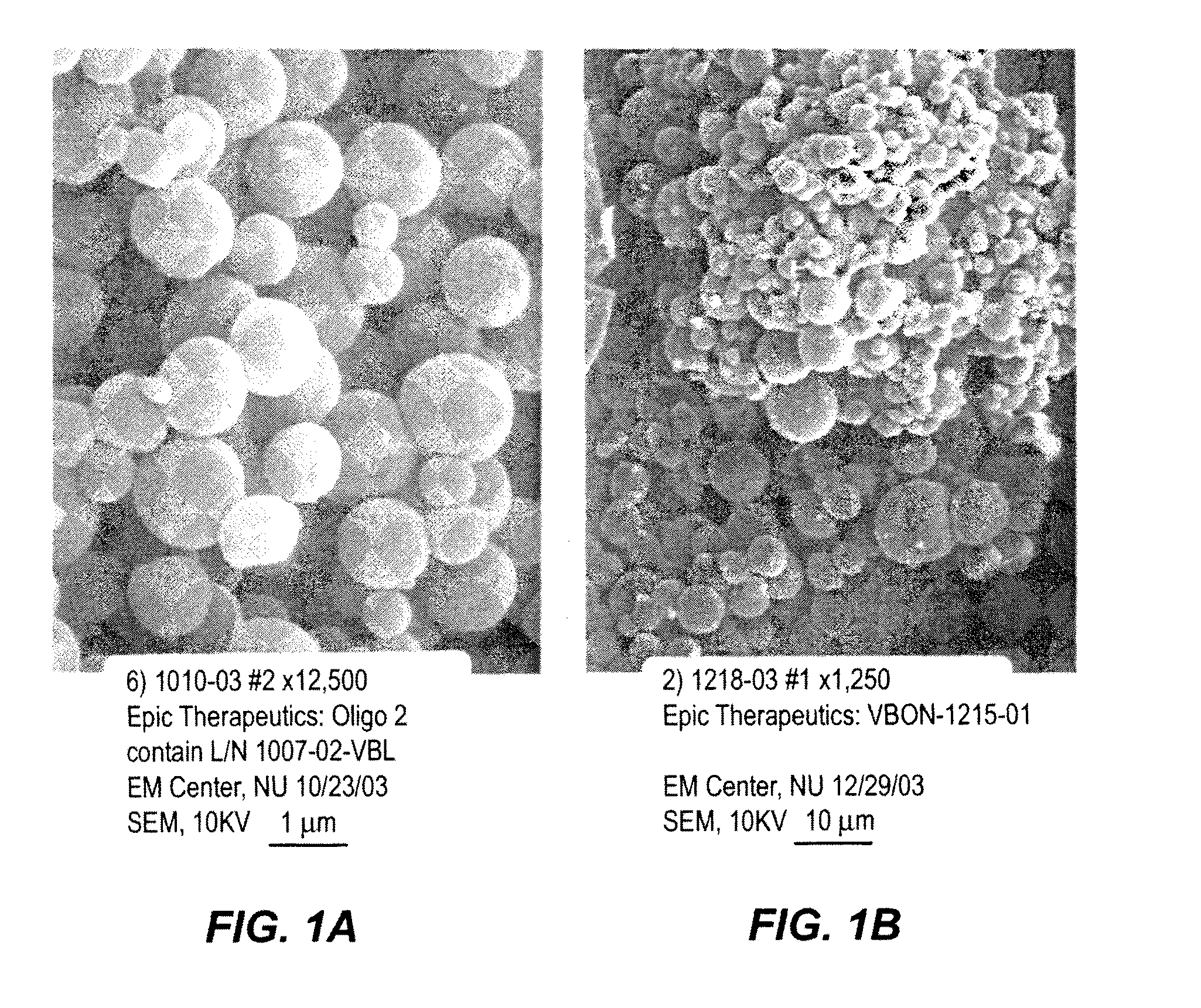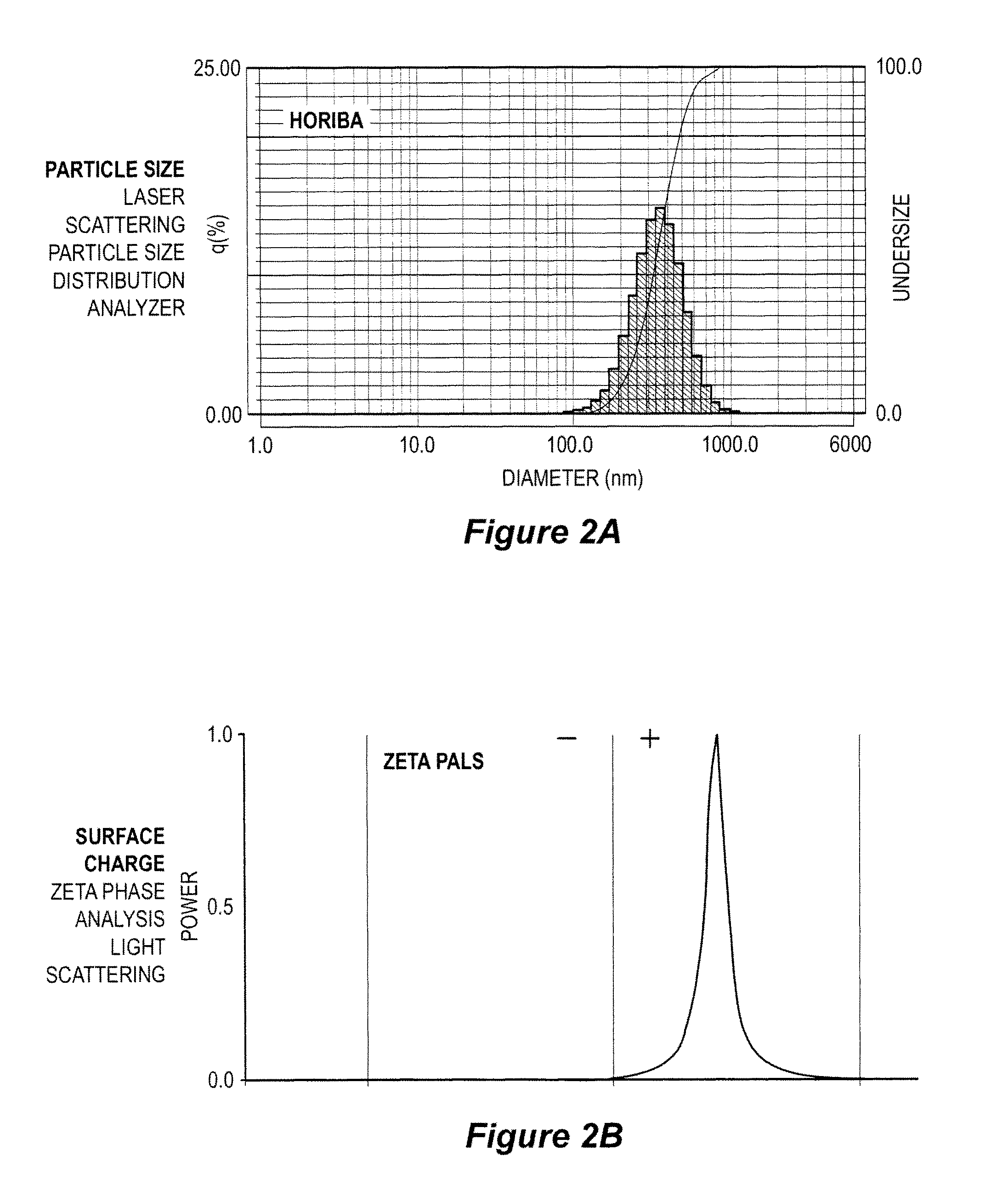Microsphere-based composition for preventing and/or reversing new-onset autoimmune diabetes
a technology of autoimmune diabetes and composition, applied in the field of antisense approach, can solve the problems of microspheres produced using polymers, poor loading efficiency, and negatively affecting the dissolution of the drug of interest, and achieve the effect of halting the further deterioration of the beta cell population
- Summary
- Abstract
- Description
- Claims
- Application Information
AI Technical Summary
Benefits of technology
Problems solved by technology
Method used
Image
Examples
example 1
[0084]Three AS-oligonucleotides targeted to the CD40, CD80 and CD86 primary transcripts were synthesized. The AS-oligonucleotide sequences used in this Example are, with asterisks indicating sites of thioation in the backbone:
[0085]
Seq ID 1:CD40-AS:5′C*AC* AG*C C*GA* GG*C* AA*AGA*C* AC*C A*T*G C*AG* GG*C*A-3′Seq ID 2:CD80-AS:5′-G*GG* AA*A G*CC* AG*G A*AT*CT*A G*AG* CC*A A*TG G*A-3′Seq ID 3:CD86-AS:5′-T*GG* GT*G C*TT* CC*G T*AA*GT*T C*TG* GA*A C*AC* G*T*C_3′
[0086]An aqueous solution of the oligonucleotide mixture was prepared by combining aliquots of three oligonucleotide solutions, each of which contained one type of oligonucleotide, to form a 10 mg / ml solution of the three types of oligonucleotides. A 10 mg / ml solution of poly-L-lysine.HBr in deionized water (poly-L-lysine.HBr up to 70,000 Daltons, by Bachem, King of Prussia, Pa.) was prepared. The poly-L-lysine.HBr was added to the oligonucleotides solution at a volumetric ratio of 1:1. The mixture was vortexed gently. A 25% polym...
example 2
[0089]In this Example, the results of tests that cover prevention aspects of the disclosure are shown. As shown in FIG. 4, a single AS-MSP administration into NOD mice at 5-8 weeks of age delays diabetes onset. Two groups of NOD female mice (5-8 weeks old) were given a single subcutaneous injection of antisense-oligonucleotides formulated into microspheres of the disclosure (AS-MSP). The formulation was injected in injected in an amount considered to contain 50 μg of a 1:1:1 mixture of each antisense oligonucleotide (anti-CD40, anti-CD80 and anti-CD86). Other groups of mice were injected with scrambled sequence microspheres (SCR-MSP) or PBS vehicle (control NOD). Blood glucose was measured weekly via tail vein puncture. Diabetes was confirmed after two consecutive readings of >280-300 mg / dL. FIG. 4 shows the cumulative survival of two independently-treated cohorts.
[0090]FIG. 5 shows that multiple AS-MSP administration into NOD mice at 5-8 weeks of age prevents diabetes onset. NOD fe...
example 3
[0099]The ability of antisense oligonucleotide microspheres to reverse the symptoms of diabetes in early onset NOD mice was also tested. A timeline for these experiments is shown in FIG. 13A. NOD mice that had early onset were selected by testing blood glucose levels and identifying animals that had a blood glucose level greater than 400 mg / dL. The selected animals were given insulin pellets to normalize blood glucose levels to below 300 mg / dL. The insulin was withdrawn and a series of parenteral injections of microspheres was started. Six animals were injected twice weekly with microspheres containing the CD40, CD80 and CD86 antisense oligonucleotides. A further ten animals were injected with microspheres containing a mixture of oligonucleotides with scrambled sequences that are not directed against CD40, CD80 and / or CD86. Each injection for both groups of animals contained 50 μg of oligonucleotides in microspheres in 100 microliters of injection solution. Two of the animals in the...
PUM
| Property | Measurement | Unit |
|---|---|---|
| diameter | aaaaa | aaaaa |
| diameter | aaaaa | aaaaa |
| Tm | aaaaa | aaaaa |
Abstract
Description
Claims
Application Information
 Login to View More
Login to View More - R&D
- Intellectual Property
- Life Sciences
- Materials
- Tech Scout
- Unparalleled Data Quality
- Higher Quality Content
- 60% Fewer Hallucinations
Browse by: Latest US Patents, China's latest patents, Technical Efficacy Thesaurus, Application Domain, Technology Topic, Popular Technical Reports.
© 2025 PatSnap. All rights reserved.Legal|Privacy policy|Modern Slavery Act Transparency Statement|Sitemap|About US| Contact US: help@patsnap.com



